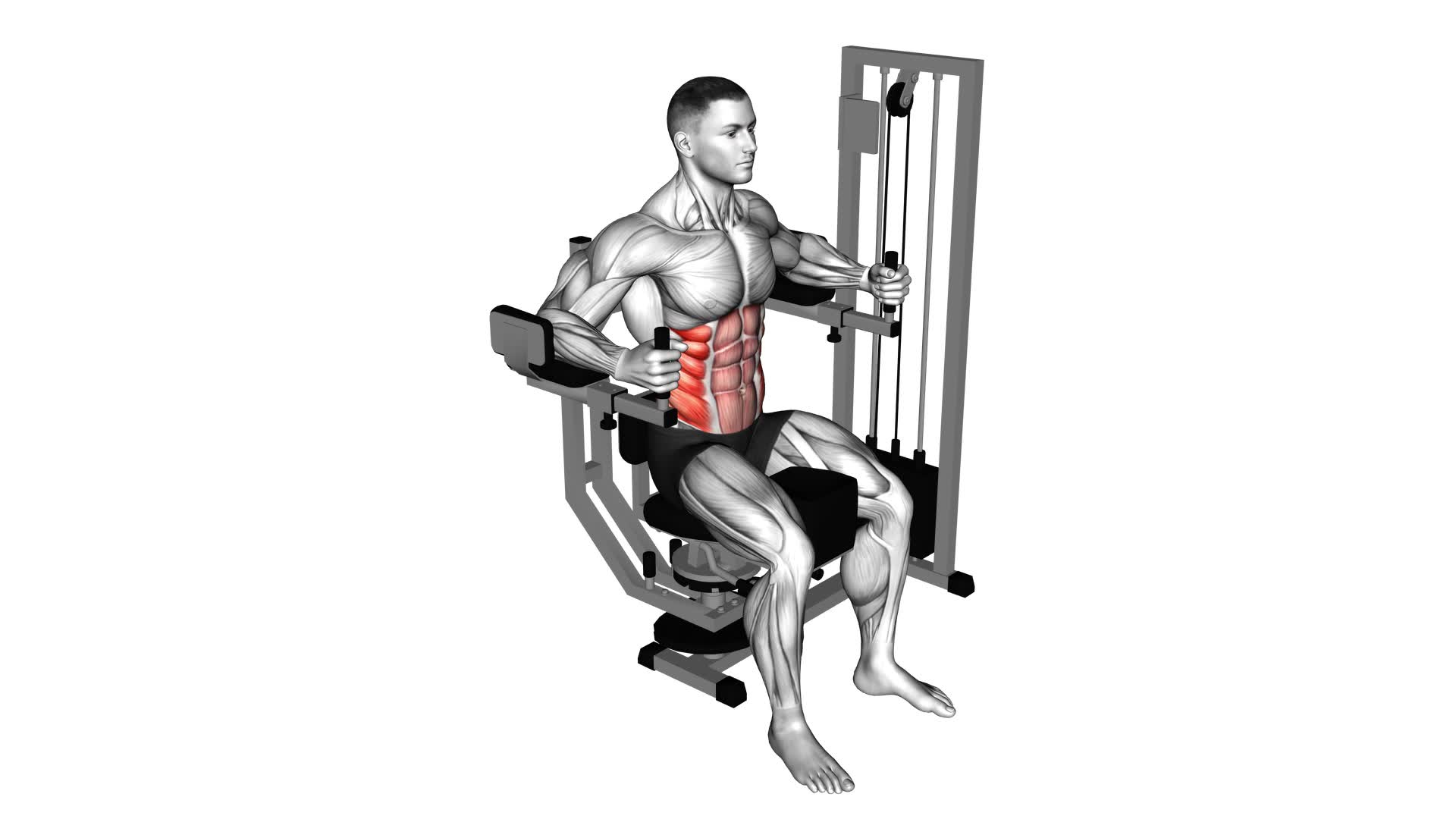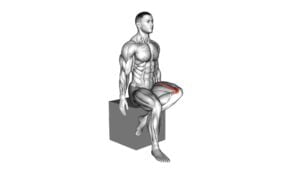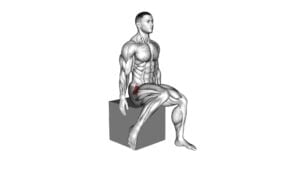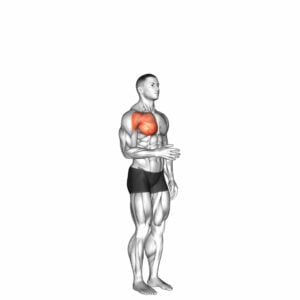Lever Trunk Rotation – Video Exercise Guide & Tips

Get ready to strengthen your core with lever trunk rotation! This video exercise guide is packed with tips to help you perfect your form and maximize your results.
Watch This Exercise Video
Whether you're a beginner or a fitness pro, there are variations for all fitness levels. Avoid common mistakes and get the most out of your workout with expert advice.
Let's dive in and master this effective core exercise together!
Key Takeaways
- Lever trunk rotation helps improve core strength and flexibility.
- Proper form and technique are important to engage and activate the core muscles effectively.
- There are variations of the exercise that cater to different fitness levels.
- Avoid common mistakes such as using excessive weight and neglecting proper alignment to maximize results.
Benefits of Lever Trunk Rotation
You will experience significant improvements in core strength and flexibility by incorporating lever trunk rotation exercises into your workout routine.
Lever trunk rotation exercises are a highly effective way to target and strengthen the muscles in your core, which includes the muscles in your abdomen, back, and pelvis.
These exercises involve rotating your torso while keeping your hips stable, which helps to engage and activate the deep muscles in your core.
One of the main benefits of lever trunk rotation exercises is the improvement in core strength.
Strong core muscles are essential for maintaining proper posture, balance, and stability during various movements and activities.
By regularly performing these exercises, you'll notice an increase in your core strength, which can greatly enhance your overall fitness performance.
In addition to improving core strength, lever trunk rotation exercises also play a crucial role in injury prevention.
A strong and stable core can help to support and protect your spine, reducing the risk of lower back pain and other injuries.
By incorporating these exercises into your workout routine, you can strengthen the muscles that surround and support your spine, promoting better spinal alignment and reducing the likelihood of injury.
To reap the benefits of improved core strength and injury prevention, it's recommended to include lever trunk rotation exercises in your regular workout routine.
These exercises can be performed using a variety of equipment, such as medicine balls or cable machines, or simply with your own body weight.
Start with a light weight or resistance and gradually increase as your strength and flexibility improve.
Remember to always maintain proper form and technique to maximize the effectiveness and safety of these exercises.
Proper Form and Technique
To ensure proper form and technique during lever trunk rotation exercises, it's important to focus on maintaining stability in your hips while rotating your torso. This will help you improve flexibility and prevent injury. Here are some tips to help you perform this exercise correctly:
- Start by standing with your feet shoulder-width apart and your knees slightly bent.
- Hold the lever with both hands, keeping your arms extended in front of you.
- Engage your core muscles and keep a straight back throughout the exercise.
- As you rotate, imagine that you're twisting from your waist, rather than using your arms or shoulders.
By maintaining stability in your hips and using proper form, you'll target the muscles in your core and improve your flexibility. This exercise can help to prevent injury by strengthening the muscles that support your spine and improving your range of motion.
Now that you understand the importance of proper form and technique, let's move on to exploring the different variations of lever trunk rotation exercises for all fitness levels.
Variations for All Fitness Levels
To progress the lever trunk rotation exercise and accommodate different fitness levels, various modifications can be implemented. For individuals who are new to this exercise or have limited mobility, a modified version can be performed by sitting on a stability ball instead of a bench. This allows for a more stable base and reduces the strain on the lower back. Another modification option is to decrease the range of motion by rotating the trunk only to a comfortable position, gradually increasing the range as strength and flexibility improve.
For those looking for a more challenging version, progression options can be incorporated. One option is to add resistance by holding a medicine ball or dumbbell while performing the exercise. This increases the load on the abdominal muscles, making the exercise more demanding. Another progression option is to perform the exercise on an unstable surface, such as a BOSU ball. This requires greater core stability and control, further challenging the muscles involved.
By modifying exercises and incorporating progression options, the lever trunk rotation exercise can be tailored to suit individuals of all fitness levels.
Now, let's discuss some common mistakes to avoid when performing this exercise.
Common Mistakes to Avoid
To ensure proper form and maximize the effectiveness of the lever trunk rotation exercise, here are some common mistakes to avoid:
- Using excessive weight: One of the most common mistakes is using too much weight, which can compromise your form and increase the risk of injury. Start with a lighter weight and gradually increase as your strength improves.
- Rushing the movement: Another mistake is performing the exercise too quickly. This not only reduces the effectiveness of the exercise but also increases the risk of injury. Focus on controlled and slow movements to engage the targeted muscles properly.
- Neglecting proper alignment: Many people tend to hunch their shoulders or lean forward during the exercise. It's important to maintain proper alignment throughout the movement to effectively target the muscles and prevent strain on your back and neck.
- Not engaging the core: The lever trunk rotation exercise primarily targets the core muscles. Failing to engage your core during the exercise can result in a lack of stability and reduce the effectiveness of the exercise. Remember to brace your core and maintain a stable trunk throughout the movement.
Tips for Maximizing Results
To maximize your results with the lever trunk rotation exercise, it's important to incorporate these tips into your routine.
First and foremost, focus on maximizing performance by maintaining proper form throughout the exercise. Start by positioning yourself on the lever trunk rotation machine with your feet firmly planted on the ground and your knees slightly bent. Place your hands on the handles and engage your core muscles. As you rotate your upper body, make sure to keep your pelvis stable and avoid excessive twisting. This will help target the muscles in your obliques and improve overall performance.
In addition to maximizing performance, improving flexibility is another key aspect of getting the most out of this exercise. Before starting the lever trunk rotation, warm up your body with dynamic stretches that target the muscles involved in the exercise. This will help increase your range of motion and prevent any potential injuries.
As you rotate your trunk, focus on maintaining a smooth and controlled movement. Avoid any jerking or quick movements, as this can put unnecessary strain on your muscles and reduce the effectiveness of the exercise.
Frequently Asked Questions
Can Lever Trunk Rotation Exercises Help With Lower Back Pain?
Lever trunk rotation exercises can be effective in alleviating lower back pain. By engaging the muscles in your core, such as the obliques and transverse abdominis, these exercises help improve stability and promote proper spinal alignment.
The benefits of lever trunk rotation exercises include increased flexibility, enhanced range of motion, and improved overall strength. Incorporating these exercises into your routine can provide relief from lower back pain and contribute to a healthier, pain-free back.
What Equipment Is Needed to Perform Lever Trunk Rotation Exercises?
To perform lever trunk rotation exercises, you'll need a lever machine or a cable machine with a rotational attachment. These exercises are beneficial for improving core strength and stability, enhancing spinal mobility, and reducing the risk of lower back pain.
How Often Should Lever Trunk Rotation Exercises Be Performed?
To maximize the benefits of lever trunk rotation exercises, it's important to consider their frequency.
How often should you perform these exercises? Well, the frequency depends on your fitness goals and current level of fitness. Generally, it's recommended to perform lever trunk rotation exercises two to three times a week.
This allows for adequate rest and recovery while still challenging your core muscles. Remember, consistency is key to seeing improvements in your rotational strength and stability.
Are There Any Specific Precautions or Contraindications for Lever Trunk Rotation Exercises?
When performing lever trunk rotation exercises, it's important to be aware of any precautions or contraindications that may apply.
Precautions are measures taken to prevent injury or complications, while contraindications are conditions that make a particular exercise unsafe or unsuitable.
It's crucial to consult with a healthcare professional or a qualified trainer to ensure that you're performing these exercises safely and effectively.
Can Lever Trunk Rotation Exercises Be Modified for Individuals With Limited Mobility or Injuries?
Lever trunk rotation exercises can be modified for individuals with limited mobility or injuries.
Modifications for limited mobility may include reducing the range of motion or using a smaller lever.
For injuries, modifications may involve avoiding the exercise altogether or using alternative movements that target the same muscles.
It's important to consult with a qualified healthcare professional or a certified fitness trainer to determine the appropriate modifications based on your specific condition and goals.
Conclusion
In conclusion, lever trunk rotation is a highly effective exercise for improving core strength and stability. By following proper form and technique, individuals can reap the benefits of this exercise at any fitness level.
Avoiding common mistakes and implementing the suggested tips will help maximize results. Incorporating lever trunk rotation into your workout routine can contribute to overall fitness and enhance athletic performance.

Author
Years ago, the spark of my life’s passion ignited in my mind the moment I stepped into the local gym for the first time. The inaugural bead of perspiration, the initial endeavor, the very first surge of endorphins, and a sense of pride that washed over me post-workout marked the beginning of my deep-seated interest in strength sports, fitness, and sports nutrition. This very curiosity blossomed rapidly into a profound fascination, propelling me to earn a Master’s degree in Physical Education from the Academy of Physical Education in Krakow, followed by a Sports Manager diploma from the Jagiellonian University. My journey of growth led me to gain more specialized qualifications, such as being a certified personal trainer with a focus on sports dietetics, a lifeguard, and an instructor for wellness and corrective gymnastics. Theoretical knowledge paired seamlessly with practical experience, reinforcing my belief that the transformation of individuals under my guidance was also a reflection of my personal growth. This belief holds true even today. Each day, I strive to push the boundaries and explore new realms. These realms gently elevate me to greater heights. The unique combination of passion for my field and the continuous quest for growth fuels my drive to break new ground.



